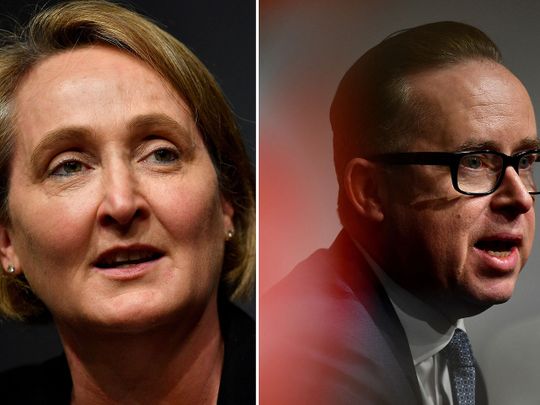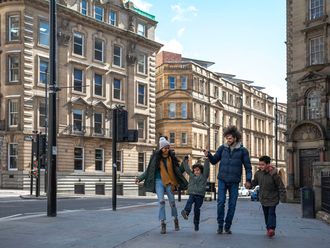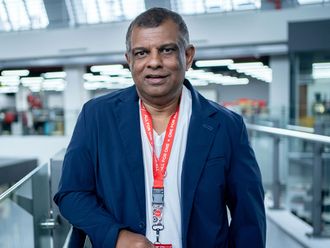
Highlights
- Hudson is the first female CEO to lead the airline
- New CEO to take over from Alan Joyce in November
- Hudson inherits airline with tarnished image after COVID cuts
- Hudson will have to repair strained ties with customers, staff
- New CEO inherits multi-billion bill to renew aging fleet
- Airline shares trending down after announcement
Qantas Airways Ltd. named Vanessa Hudson as its new chief executive officer, making her the first woman to lead the airline in its 103-year history.
Hudson, who has worked at the carrier for almost three decades and is currently chief financial officer, will assume the top job in November, Sydney-based Qantas said Tuesday. Current CEO Alan Joyce, one of aviation's longest-serving leaders, will step down after 15 years in the role.
Hudson will be handed an airline delivering record profits amid surging demand for air travel after Joyce slashed thousands of jobs during the Covid-19 crisis. She will also inherit strained ties with union leaders and bruised relations with passengers angered by pandemic-related cancellations, delays and lost bags.
Hudson started with Qantas in 1994 as an internal auditor before becoming catering product manager three years later. She has since held leadership positions in commercial planning and sales and distribution, and was the airline's chief customer officer before the pandemic.

She started as chief financial officer in October 2019, just a few months before the COVID-19 pandemic devastated the travel industry globally.
In March 2020, under her leadership, Qantas secured $628 million of debt funding against its aircraft fleet to help strengthen its financial position, moving faster than most carriers to shore up capital to deal with the plunge in demand.
In June 2020 she led a $1.3 billion capital raising to help see the airline through the pandemic, the carrier's first equity raising in more than a decade.
She has also overseen the airline's fleet replacement and expansion plans as part of her role as chief financial officer, including a multi-billion dollar order for Airbus SE jets placed last year.
Hudson managed the airline's balance sheet effectively as demand rebounded, with Qantas announcing a surprise $276 million share buyback in August 2022 after debt fell below its targeted range.
In recent months, Hudson was seen as a likely candidate to succeed Joyce, who had led the airline since 2008.
"Vanessa has a deep understanding of this business after almost three decades in a range of roles both onshore and offshore, across commercial, customer and finance," Qantas Chairman Richard Goyder said.
While Joyce is famed for turning around one of Australia's most iconic brands at least twice and enriching shareholders, he leaves behind a divisive legacy after a series of employee cuts.
The earlier-than-expected succession announcement allows Joyce to hand over the reins over a six-month period. Goyder had previously said Joyce would remain in charge until at least the end of 2023.
Hudson hadn't hidden her ambitions to lead the airline. She put her hand up for the role in an interview with Bloomberg Television in March last year. "If the board were to give me the opportunity to step into Alan's shoes, I would be incredibly honored and proud," she said at the time. "There are a number of candidates competing for that role."
The challenges facing incoming Qantas CEO Vanessa Hudson
The 28-year company veteran replaces Alan Joyce, who will step down in November after 15 years in the role "- one of the global aviation industry's longest tenures. While Joyce is famed for turning around the airline at least twice "- recently posting a record A$1 billion ($663 million) first-half profit "- he leaves a divisive legacy and an expensive future for Hudson. Here are five of the top tasks facing the first woman to lead the 103-year-old airline:
- Hudson will have to repair strained ties with customers, staff
- New CEO inherits multi-billion bill to renew aging fleet
Paying for Planes
Some of Qantas' workhorse Boeing Co. 737 jets have shuttled short hops like Sydney-Melbourne for more than 20 years and are showing their age. Joyce's biggest departing gift to Hudson is the multi-billion dollar bill to upgrade the fleet. Following a deal he struck in 2021, Qantas can tap about 300 new Airbus SE jets as part of Australia's largest-ever plane order. The airline is due to receive a new aircraft every three weeks for the next three years. Yet delivery costs will drive annual capital expenditure to a record A$3.36 billion by 2025, analysts estimate. The expense will eat into earnings and whatever might be left for shareholders.
Repairing Ties
Hudson will take the helm as relations with unions and passengers plumb an all-time low. The soured ties go back to at least 2011, when Joyce grounded the entire Qantas fleet to settle a labor dispute and stranded about 70,000 customers around the world. Employee representatives later accused Joyce of using the Covid-19 pandemic to get rid of some of the highest-paid cabin crew, and a court ruled that Qantas sacked more than 1,000 ground workers illegally. When air-travel demand surged back, Joyce become a lightning rod for passengers angered by a flurry of cancellations, delays and lost bags. His Sydney home was pelted with eggs and his surname became a byword on social media for air-travel disruptions.
Non-Stop to New York
Hudson faces the unprecedented task of rolling out non-stop flights linking Sydney with London and New York in late 2025, the world's longest direct commercial services. Joyce might have stayed on to join the first 20-hour trips had Covid not delayed the planned launch. Instead, his successor must somehow make money from the landmark project, conceived under Joyce at least six years ago and cemented last year when he ordered customized long-range Airbus A350s. The cost of those 12 jets is estimated at more than A$3 billion.
Healthy Rivalry
Three years ago, the pandemic triggered the almost immediate collapse of Qantas' main domestic rival, Virgin Australia, then-laden with debt. In the aftermath, Qantas piled into the void left by Virgin. Australia's largest airline saw its market share in Australia touch 74%.
But Virgin Australia is back. Now owned by buyout firm Bain Capital, unburdened by borrowings, and run by ex-Qantas executive Jayne Hrdlicka, the smaller carrier is making money and is considering an IPO as soon as this year. The combined domestic market share of Qantas and Jetstar has dipped to 62%, and Virgin carries more passengers on the busiest routes between Australia's major cities. For the first time in more than a decade, Qantas faces a primary competitor that's profitable, low on costs and light on debt.
Going Green
Joyce has bet big on ultra-long haul services, the most-polluting flights of all. The task of cleaning up after them will start with Hudson. Like many companies across the aviation industry, Qantas plans to reach net zero emissions by 2050. While sustainable aviation fuel offers an immediate way to decarbonize flying, the kerosene alternative remains expensive and in limited supply. Compounding the challenge for Hudson, there's no major provider of SAF in Australia, despite Joyce's repeated pleas for the government to kickstart domestic production.











